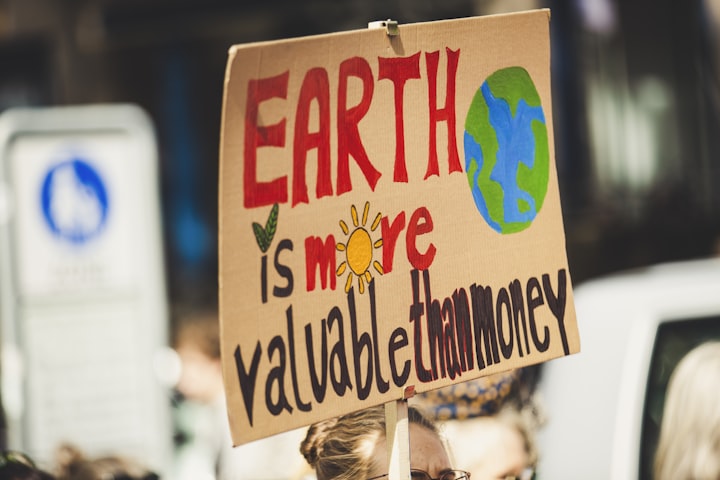Sustainability and Environmentalism
Unlocking the Secrets of Sustainable Business Practices

Introduction
Sustainability and environmentalism are two concepts that have become increasingly important in recent years due to the ever-growing threats of climate change, resource depletion, pollution, and other environmental issues. Sustainability is generally defined as meeting the needs of current generations without compromising the ability of future generations to meet their own needs. Environmentalism is a broader term used to refer to environmental conservation practices that protect natural resources from exploitation or destruction. Both sustainability and environmentalism aim to ensure a healthy environment for all life on Earth by minimizing human impact on ecosystems. The benefits of these practices range from improved air quality and water conservation efforts, to reduced greenhouse gas emissions and increased economic growth opportunities through green technology development. Ultimately, sustainable business practices can help communities benefit from more efficient use of resources while protecting our planet for future generations.
Environmental Regulations
International environmental law is designed to protect the global environment by regulating activities that have significant transboundary effects such as climate change, biodiversity loss, and acid rain. International agreements on these issues are negotiated among governments of countries around the world and often involve economic sanctions or other forms of enforcement. Examples of international environmental regulation include the Montreal Protocol which regulates ozone-depleting substances, the Kyoto Protocol which sets limits on greenhouse gas emissions, and various treaties protecting endangered species.
National environmental regulations are created at a country level in order to ensure compliance with international standards and safeguard local resources from exploitation or destruction. These laws typically cover areas such as air pollution control, hazardous waste management, water quality protection measures, wildlife conservation efforts, protected lands designation programs and others. National environmental regulations usually mandate reporting requirements for industries operating within their jurisdiction so that authorities can monitor their progress towards meeting established standards.
Local environmental regulations are those enacted by regional or municipal governments in order to meet specific needs within their jurisdictions. These laws may address topics ranging from noise pollution control to land use planning initiatives aimed at preserving natural areas from development pressures. Local policies often focus on particular problems like reducing traffic congestion through mass transit systems or improving public health through stricter clean air standards in urban areas. In addition to implementing existing national regulations, local governments also have some flexibility when it comes to creating new rules tailored specifically for their communities’ unique circumstances.
Environmental Economics
Economic drivers of change refer to the various economic forces that shape environmental policies and decisions. These include consumer demand, resource scarcity, technological advances, government subsidies, and other economic incentives or regulations. By understanding how these factors interact with each other it is possible to better predict the impact of different policy options on our environment.
Environmental cost-benefit analysis is a tool used by governments to evaluate potential initiatives in terms of their positive and negative impacts on society and nature. This type of analysis weighs both the direct costs associated with an initiative (such as financial outlays) against its projected benefits (like improved air quality or reduced noise pollution). In doing so, decision makers can make informed choices about which projects should be pursued based on their overall net benefit to society and nature.
Measuring the impact of sustainability initiatives is critical for assessing progress towards established goals such as reducing carbon emissions or preserving biodiversity. Performance metrics commonly employed in this regard include energy efficiency ratings, water usage levels, waste production figures, species counts within protected areas and others that are tailored for specific objectives. Such measurements allow authorities to assess whether existing programs are having desired effects over time while also providing guidance for developing future strategies aimed at achieving greater success in protecting our environment.
Environmental Technologies
Green energy solutions involve the use of renewable sources such as solar, wind, geothermal and hydroelectric power to generate electricity. These clean sources of energy are not only more sustainable than traditional fuels but can also be cheaper in the long run when appropriate incentives are provided. In addition to providing a reliable source of electricity, green energy technologies can also reduce carbon emissions from fossil fuel burning power plants thus helping to mitigate global climate change.
Waste management and recycling involve strategies for reducing raw material consumption by reusing or repurposing materials that otherwise would have been discarded as waste. Such initiatives may include composting organic matter for fertilizers; recovering glass, paper and plastic items for reuse; or breaking down large industrial items into smaller components with greater value on the secondary market. Through these measures environmental conservation efforts can be significantly enhanced while generating additional economic benefits through creation of jobs in the recycling industry and sale of recovered materials at lower costs than virgin resources.
Green building technologies refer to construction methods that prioritize efficiency over conventional designs while minimizing negative impacts on local ecosystems such as excessive water usage or air pollution caused by certain building materials like concrete and steel production processes. Green buildings often feature design elements aimed at optimizing resource use including passive heating/cooling systems; natural lighting systems; improved insulation techniques; rainwater harvesting systems and others which collectively result in significant savings both in terms of money spent during construction phase as well as ongoing operational costs associated with running them once they become inhabited spaces.
The Human Factor
Environmental education is an important aspect of human factor in environmental conservation. It involves teaching the public, especially children, about the importance of protecting our planet and understanding how their actions can have a direct impact on the environment. Environmental advocacy refers to efforts to raise awareness of specific issues such as global warming or deforestation by educating people and engaging them in activities that support sustainable solutions. This may involve lobbying government officials for stronger regulations or organizing protests or campaigns to pressure businesses into adopting more eco-friendly practices. Finally, environmental activism consists of individuals taking direct action through protest marches, boycotts, petitions and other forms of civil disobedience to create change for a cause they believe in. These activities are often aimed at raising public awareness about environmental degradation caused by greed and irresponsible behavior from corporations or governments. By working together with these three components – education, advocacy and activism – we can ensure that future generations have access to clean air and water while also enjoying abundant natural resources which sustain life on Earth.
Conclusion
Sustainability and environmentalism are essential to ensure that future generations can enjoy a healthy, prosperous planet. To achieve this goal, individuals must take responsibility for their actions and strive to reduce the negative impacts they have on the environment through active lifestyle choices. This can include recycling materials when possible, limiting water use in daily activities, opting for organic produce or goods made with sustainable practices whenever possible, carpooling or using public transportation instead of driving alone to conserve fuel resources, and supporting organizations working towards protecting our planet’s precious natural resources. By making these small changes in our lives we can help create a more sustainable world while also preserving our rightful heritage as stewards of the Earth.
About the Creator
Haseeb Abbas Jaffri
I am an ambitious economics student with a passion for technology and a thirst for knowledge. As a natural writer and communicator, I have found the perfect platform to share their insights and expertise with the world.





Comments
There are no comments for this story
Be the first to respond and start the conversation.